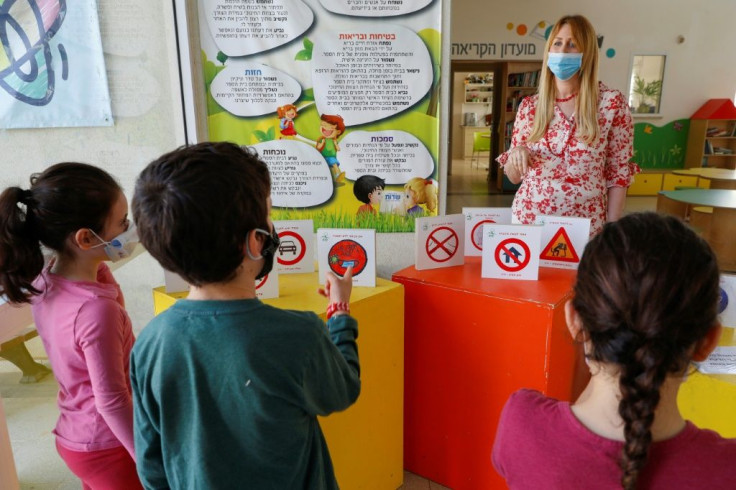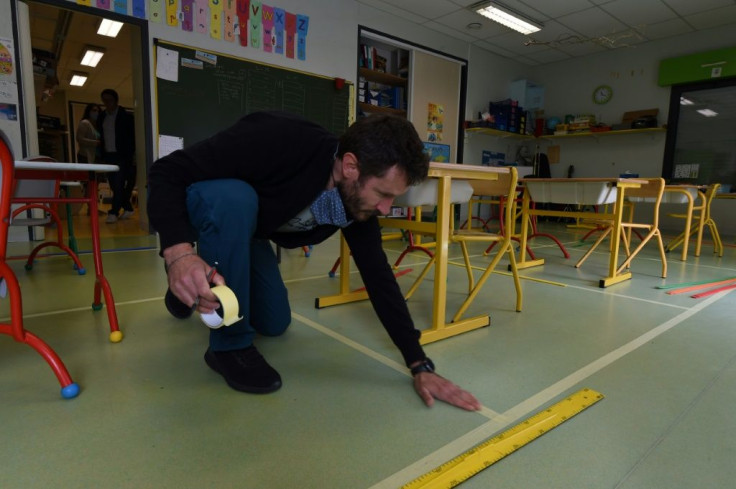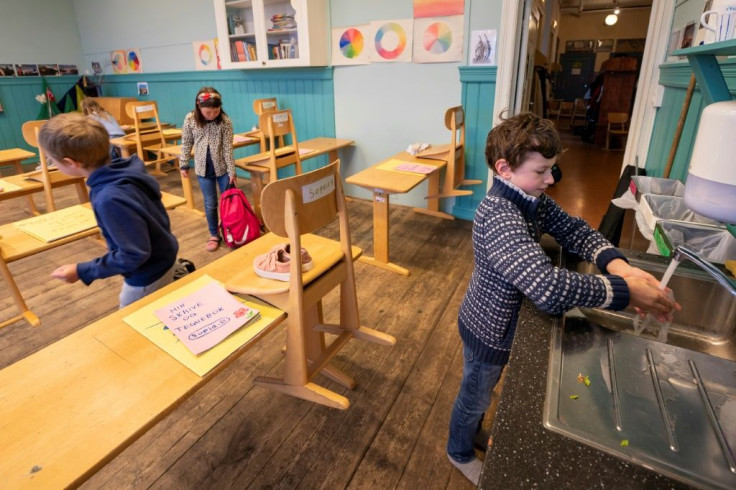Back To School? Officials Move Warily As Challenges Loom
Authoritiesworldwide face the formidable challenge of returning millions of children to classrooms shut due to the coronavirus outbreak, weighing the need to limit the educational damage against the risks of fuelling a surge in new cases.
Although young people appear less vulnerable to COVID-19, experts say they could still be a vector for contagion, a major worry for both parents and teachers.
"Some are impatient to renew the contact with students, but others are scared," said Xavier Toussaint, a secondary school teacher in Waterloo, Belgium.
And even if the crisis eases, social distancing measures will drastically change how classrooms look -- and how children interact with their teachers and each other -- for months, if not years.

At Toussaint's school of 800 pupils, only 10 classes consisting of small groups will resume from May 18, meaning officials will have to choose who can come.
"The requirement is a maximum of 10 per class, with four square metres (43 square feet) of space per student, plus eight square metres for the teacher," he said.
Similar restrictions are planned across Europe: France is ordering continual hand-washings throughout the day, no group play at recess, one-way hallways to avoid mingling, and face masks for all but the youngest students.
Parents are also being urged to take their children's temperature each morning when the country begins its staggered returns next week.
In Paris, schools will be able to accomodate just 15 percent of students, Mayor Anne Hidalgo said this week.

She and more than 300 other mayors in the greater Paris region have called to push back the returns, echoing worries in other countries keeping most schools shut for now.
Italy and Spain, hit hard by the coronavirus, have cancelled class until September, as have Bulgaria, Ireland, Portugal, Tunisia, and the state of New York.
In China's Wuhan, where the outbreak erupted in December, students began returning to class only this week, wearing masks and walking in single file past thermal scanners, after being shut out since January.

At the height of the crisis, an estimated 1.5 billion learners from kindergarten to university were stuck at home in 195 countries, a number that stood at 1.3 billion as of May 7, the UN education agency UNESCO said.
It has warned the lockdowns could further widen education gaps between rich and poor since half the world's students lack access to computers for home schooling.
"The decision on when and how to reopen schools is far from simple," UN chief Audrey Azoulay said this week.
"But as numerous students fall behind in their learning... reopening must be a priority," she said.

Even in developed countries, officials are racing for students to have at least a few weeks in the classroom before the summer break, a tacit admission that "distance learning" cannot make up for the educational deficit from two months or more of home confinement.
"It's not bad that they do it in this way," said Alice Laval, a French teacher in Vienna who agreed home schooling had increased disparities between students with good support networks and those without.
"At first it will be all about checking how the kids are doing," she said of the return.
Laval said preparing Austrian schools for the strict sanitary rules, dividing classes and reworking schedules, had been "an immense effort."
Other teachers have been less sanguine, many taking to social media to mock decrees such as cleaning every crayon before it is shared, or making sure five-year-olds respect a safe social distance of one metre from their classmates.
"It's broadly accepted that this pandemic is far from under control, and everyone is worried about a second wave" of cases, France's FSU teachers' union said in a statement.
"As of now, there is no guarantee that the conditions for health safety will be met in France for public servants, children or their families by May 11," it said.
As the virus continues to exact heavy tolls, authorities will be closely watching those countries reopening schools to see if there is a flare-up in new cases that could overwhelm hospitals.
Scandinavian countries in particular have moved quickly to reopen schools or, in the case of Sweden, avoided closures altogether.
"Students are happy to be back and are following the rules to stay in small groups and limit contacts. And they've become expert hand-washers," said Kathrine Wilsher Lohre, principal at a school outside Oslo in Norway.
"From what we've seen so far, respecting the safety distances in groups has been hardest for the children, but I think good hand hygiene will help to stop any spread of infections," she said.
Some parents were wary -- A Norwegian Facebook group called "My child should not be a guinea pig for COVID-19" garnered some 27,000 members.
Officials have tried to play down the risks, while emphasising the need to revive economies battered by the business closures and stay-at-home orders to combat the outbreak.
"The share of children with the disease is small. The risk of a child infecting an adult is not realistic. Opening schools is risk-free," said Finland's top public health official, Mika Salminen.
France's Prime Minister Edouard Philippe has also rejected claims that the government is moving too fast, warning this week that the lockdown has been a "catastrophe for the most vulnerable children and adolescents."
"Reopening schools is a priority for us," he said.
© Copyright AFP 2024. All rights reserved.





















